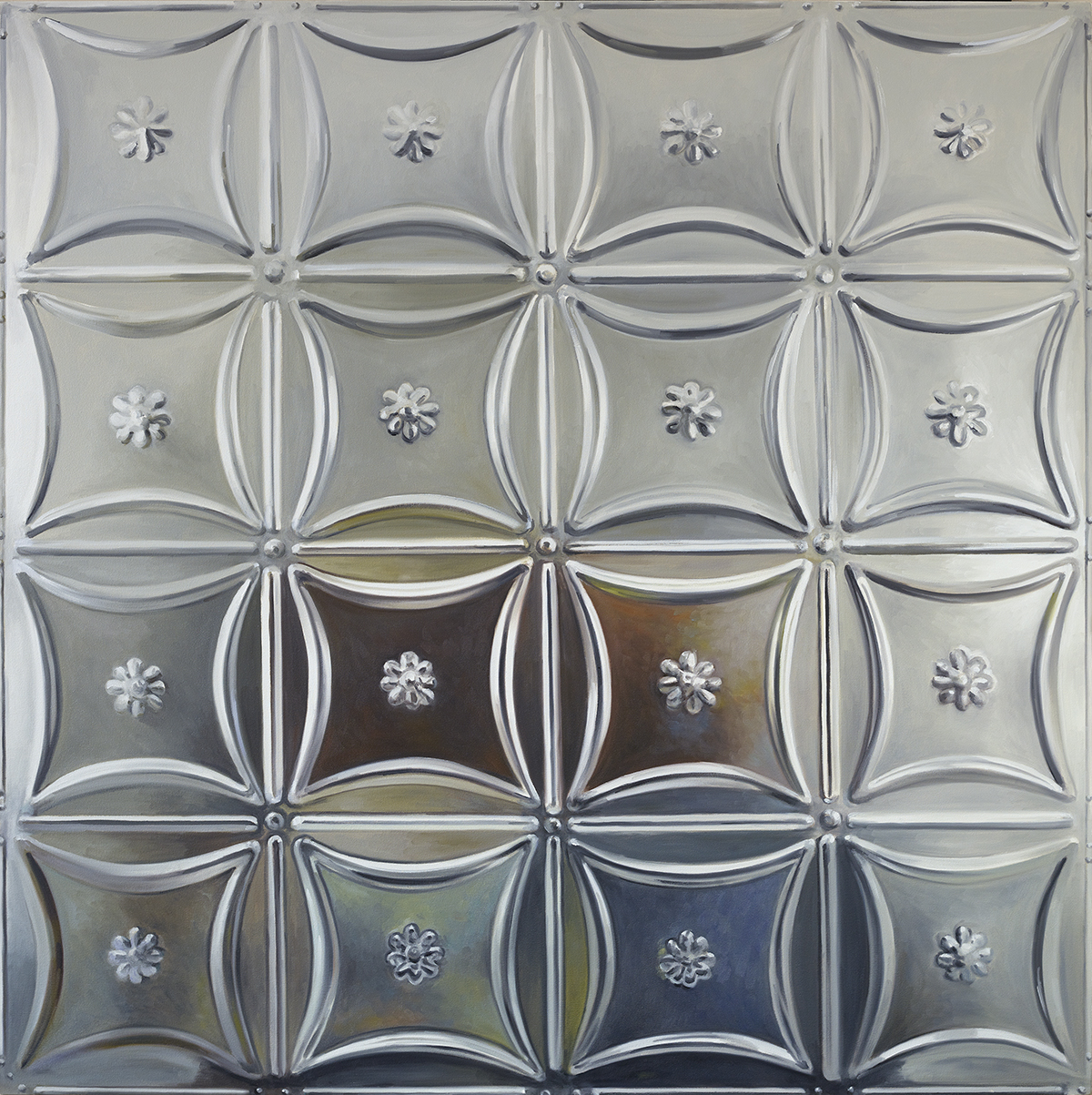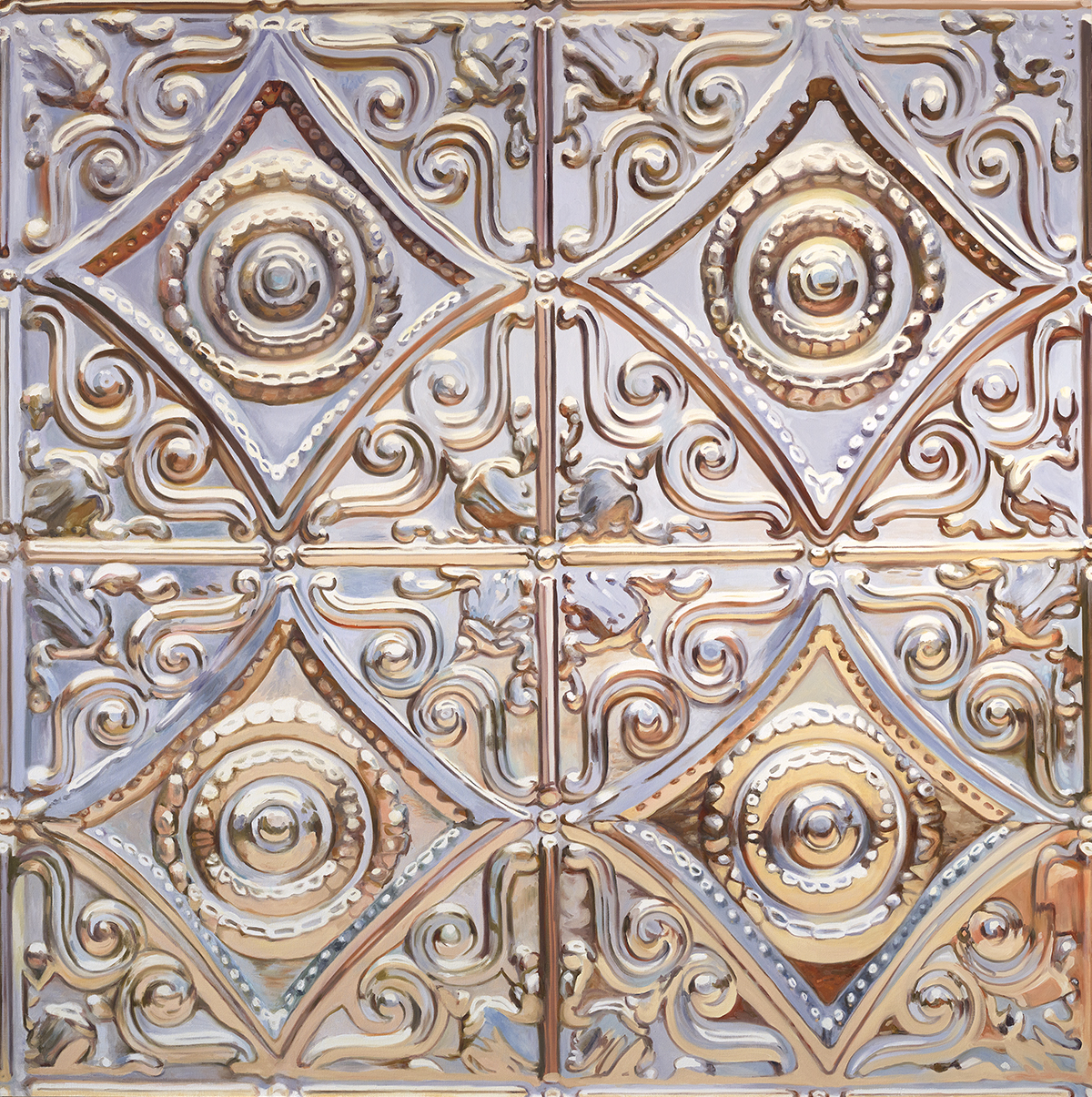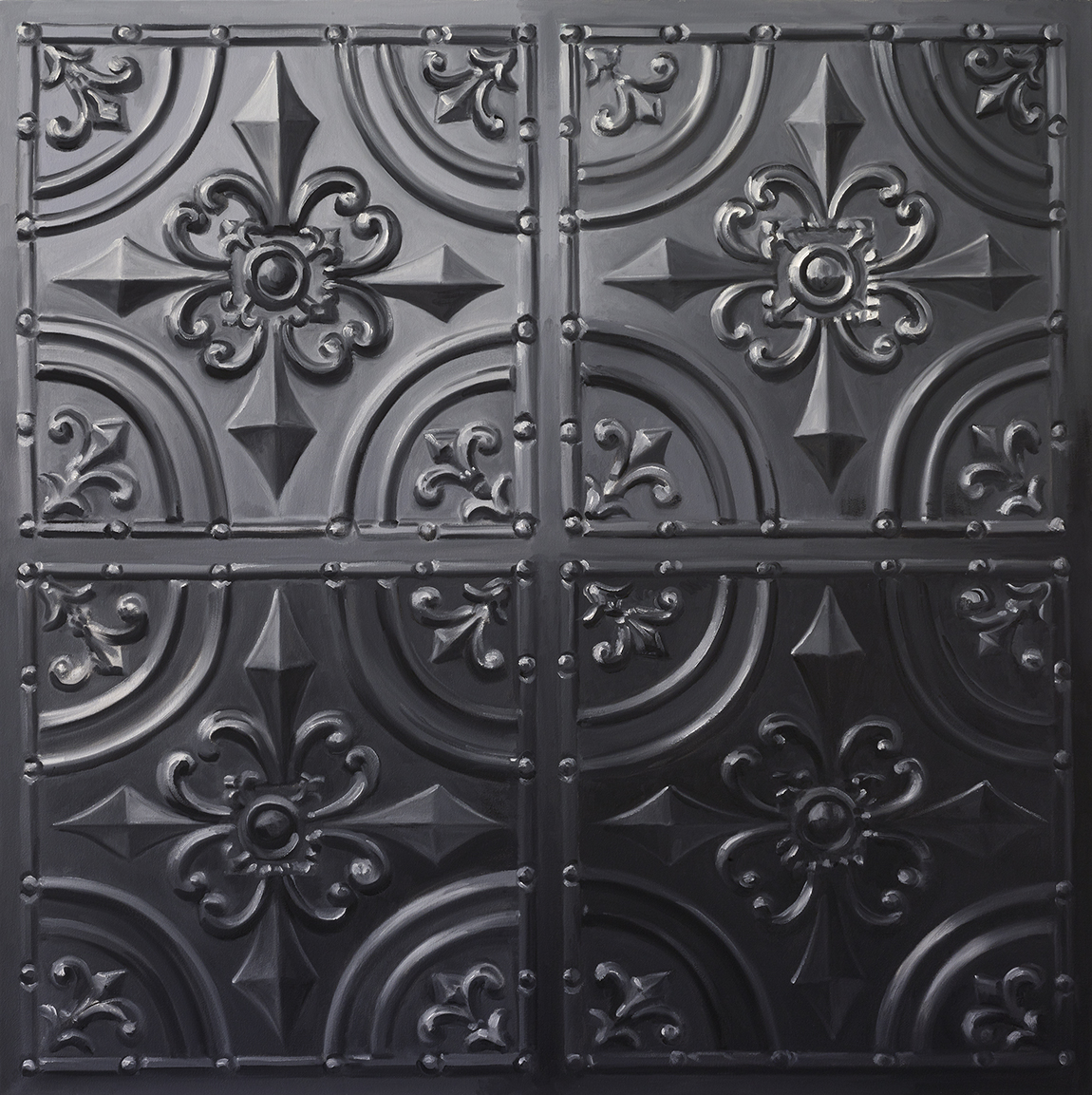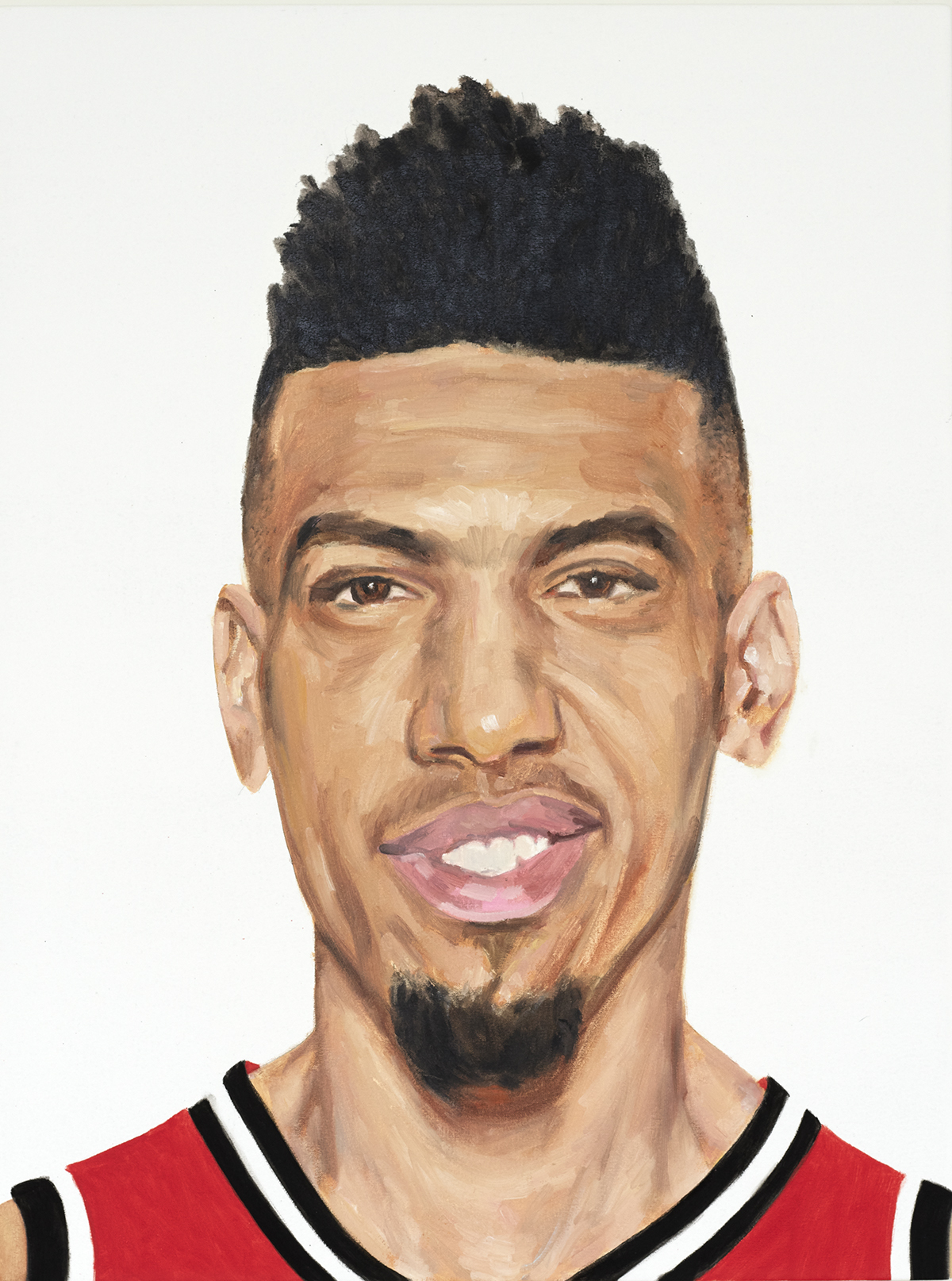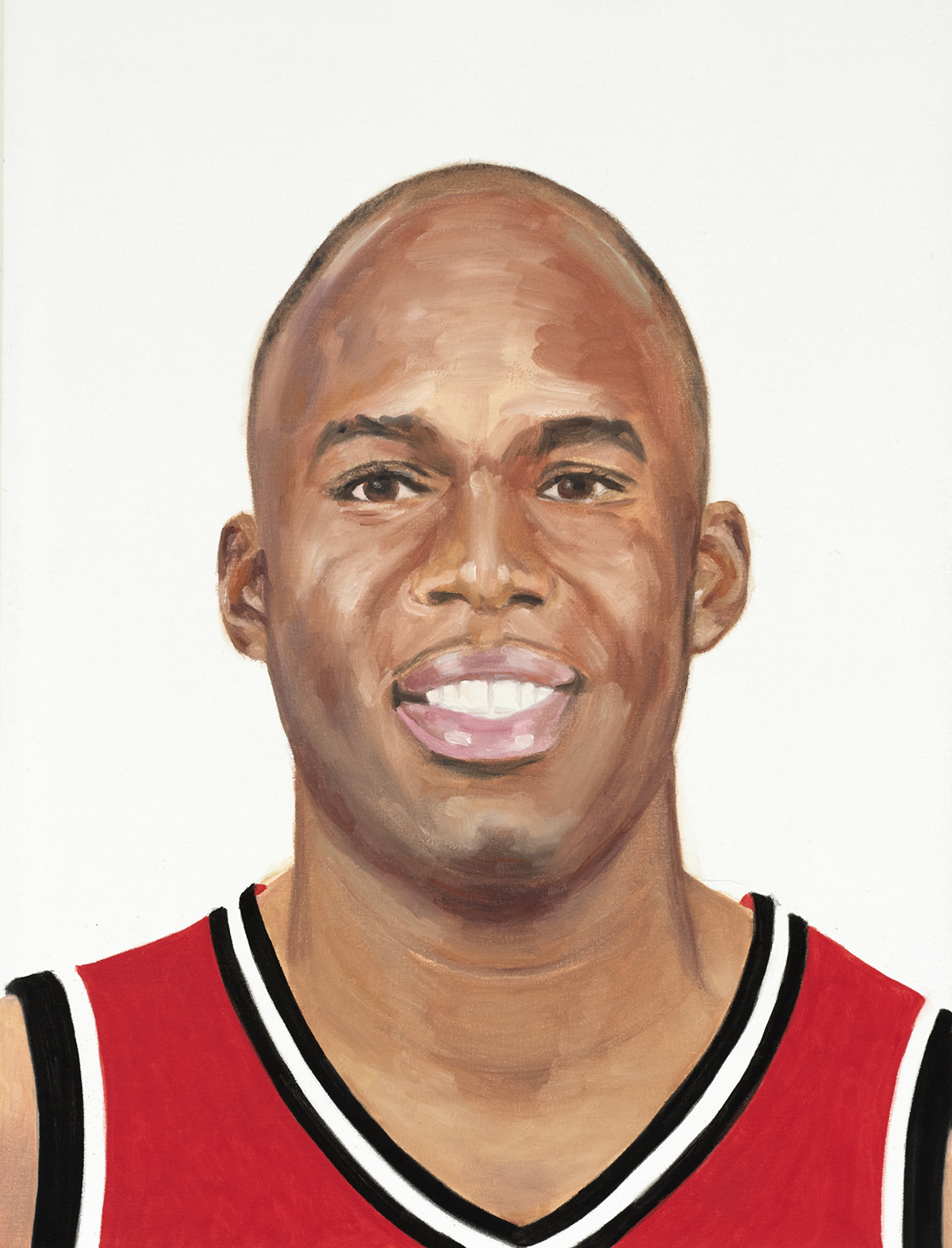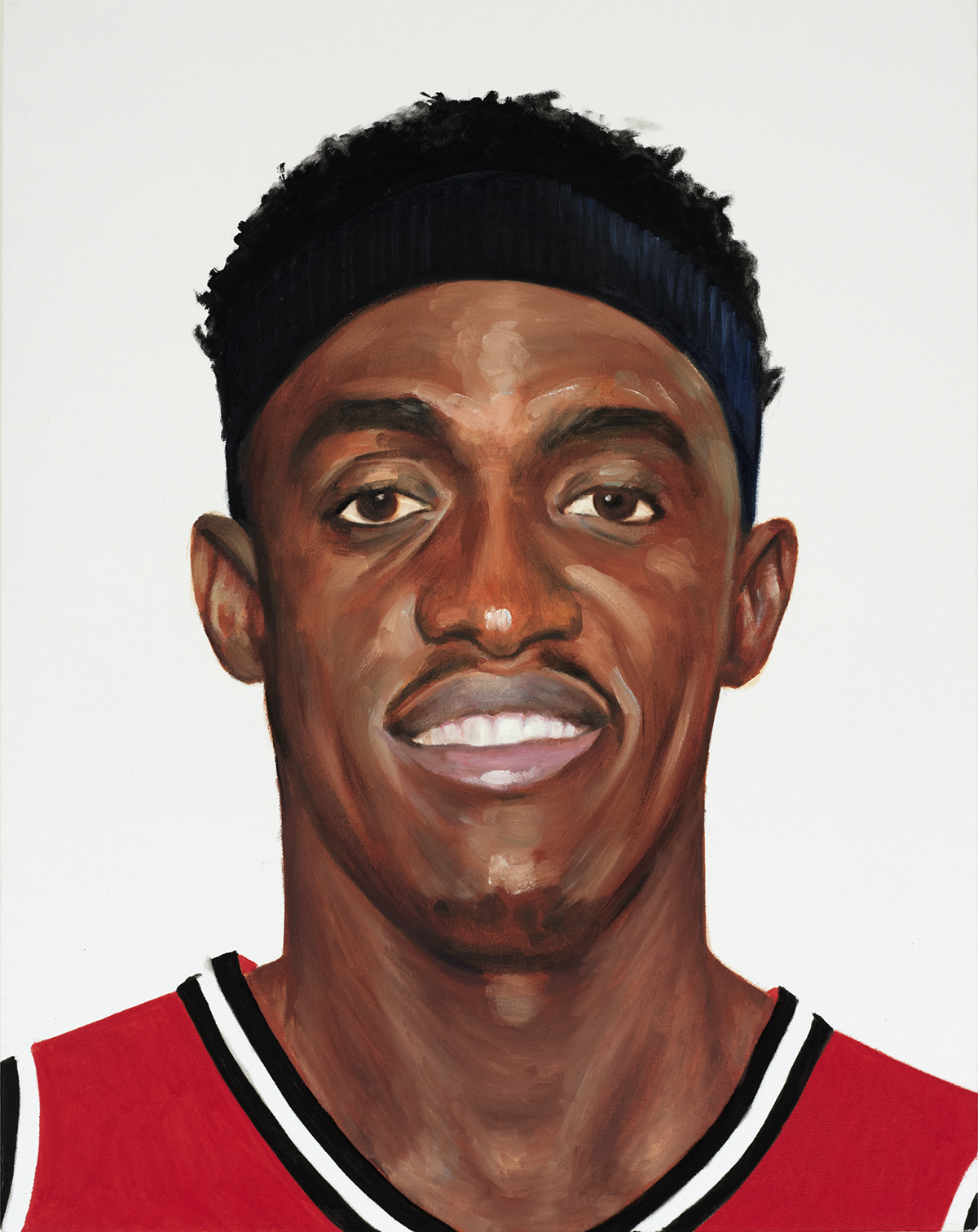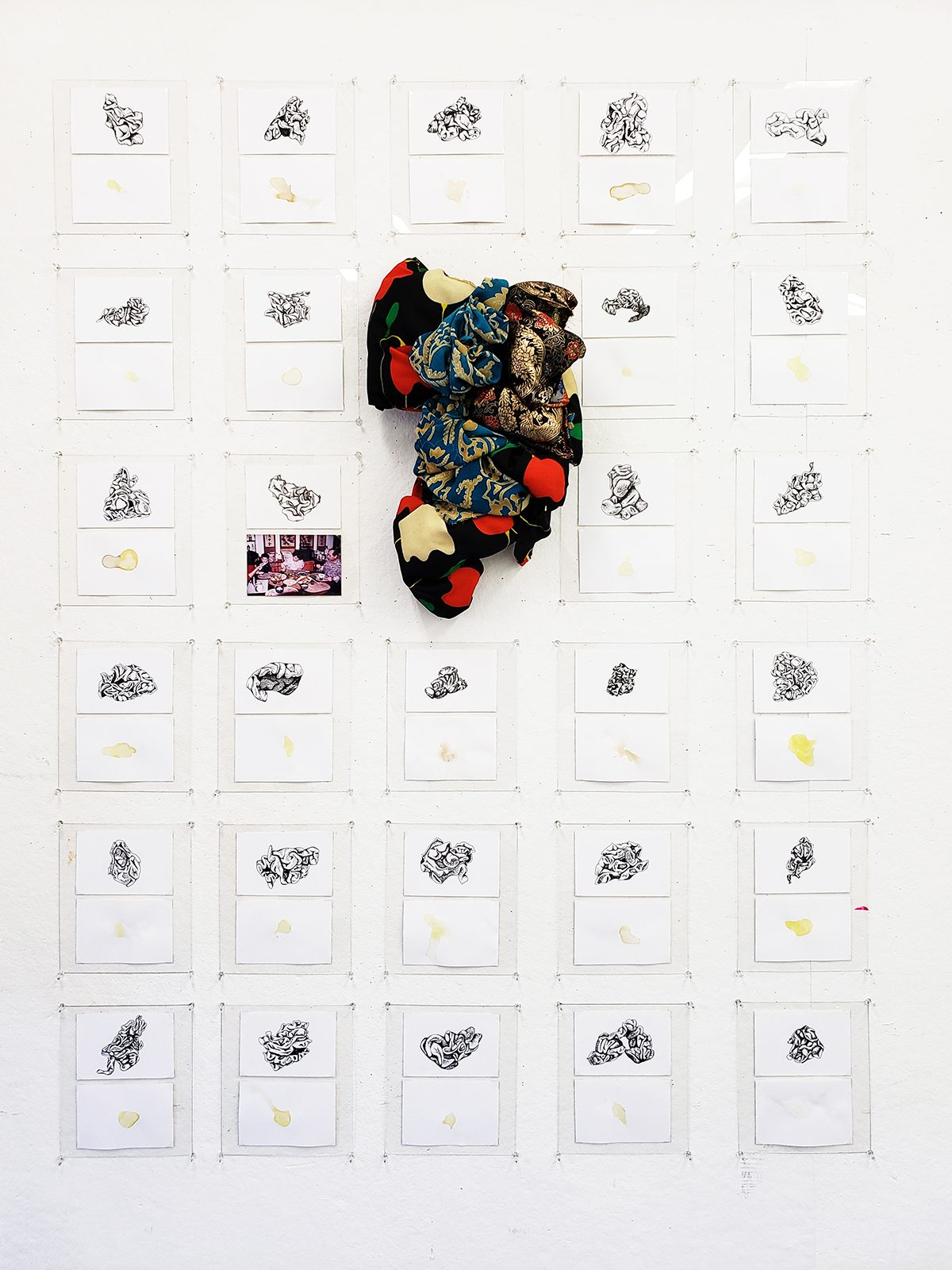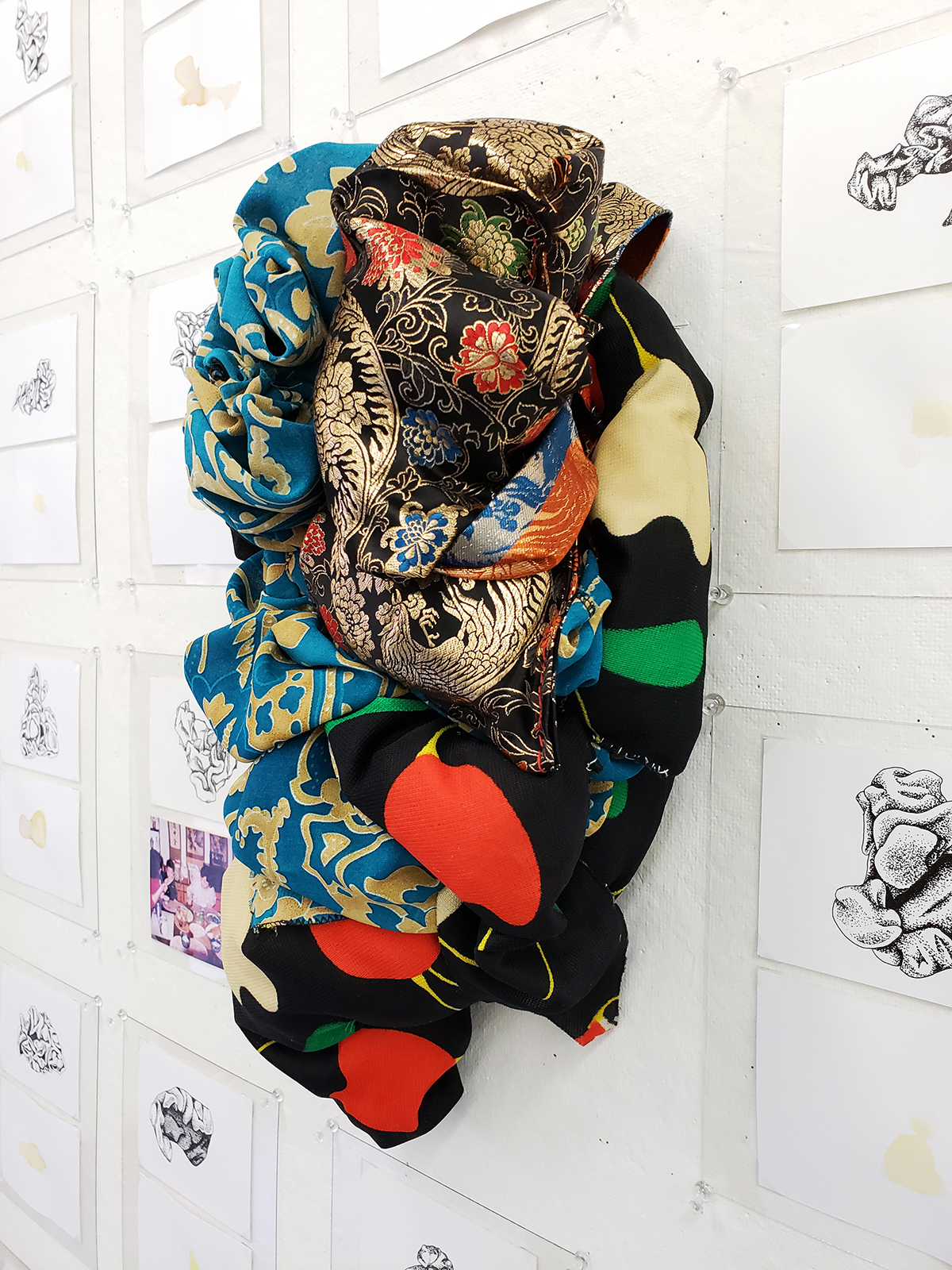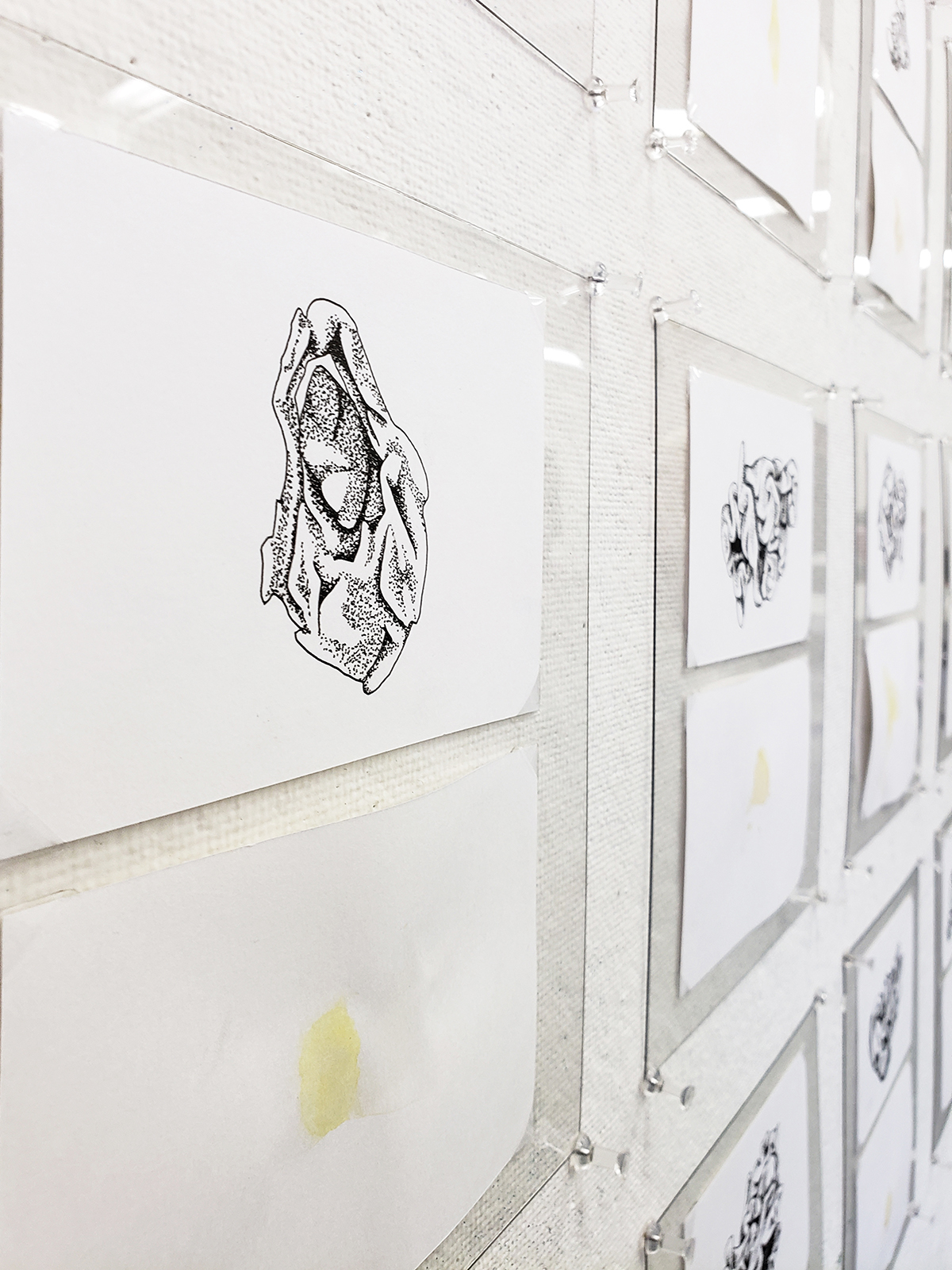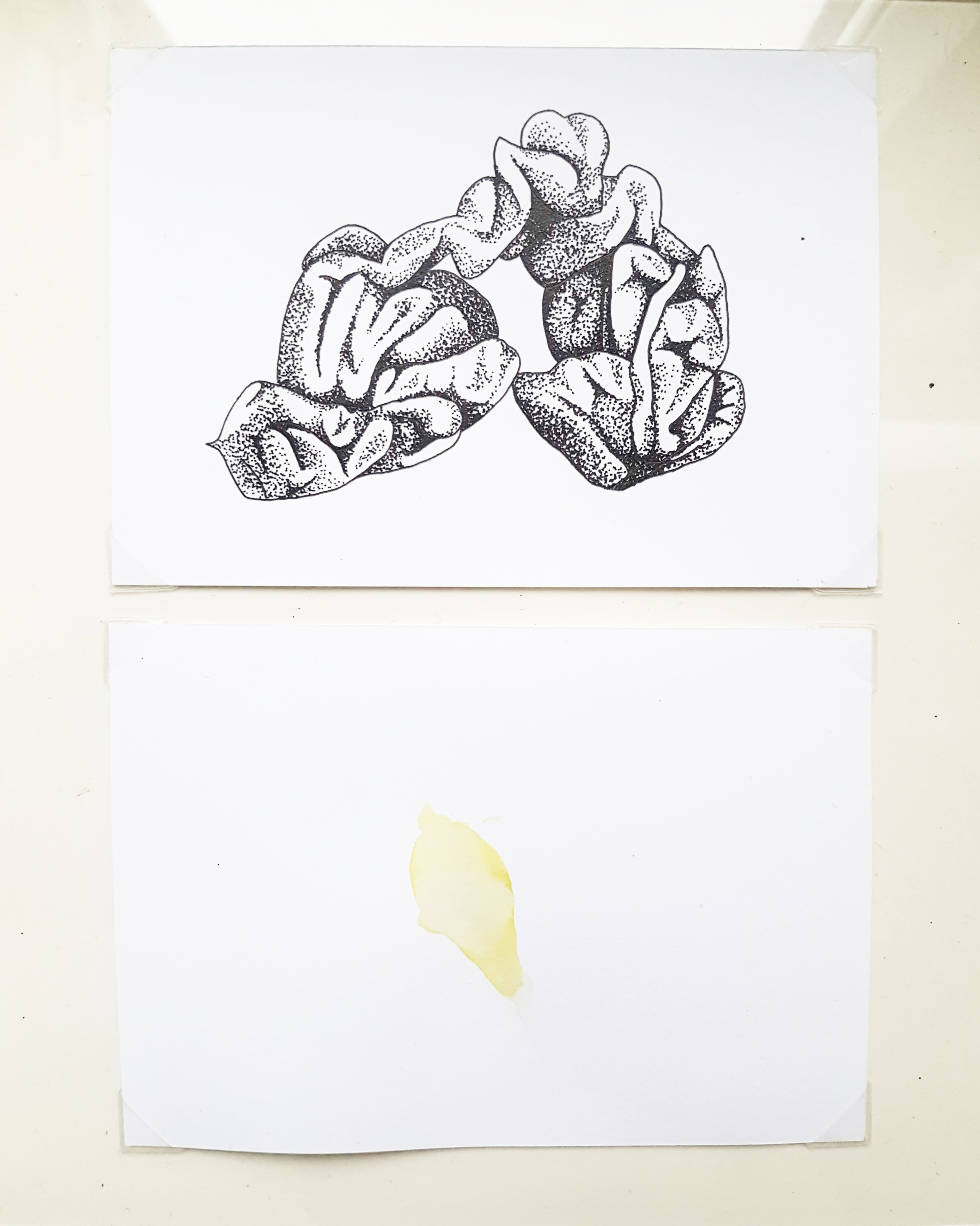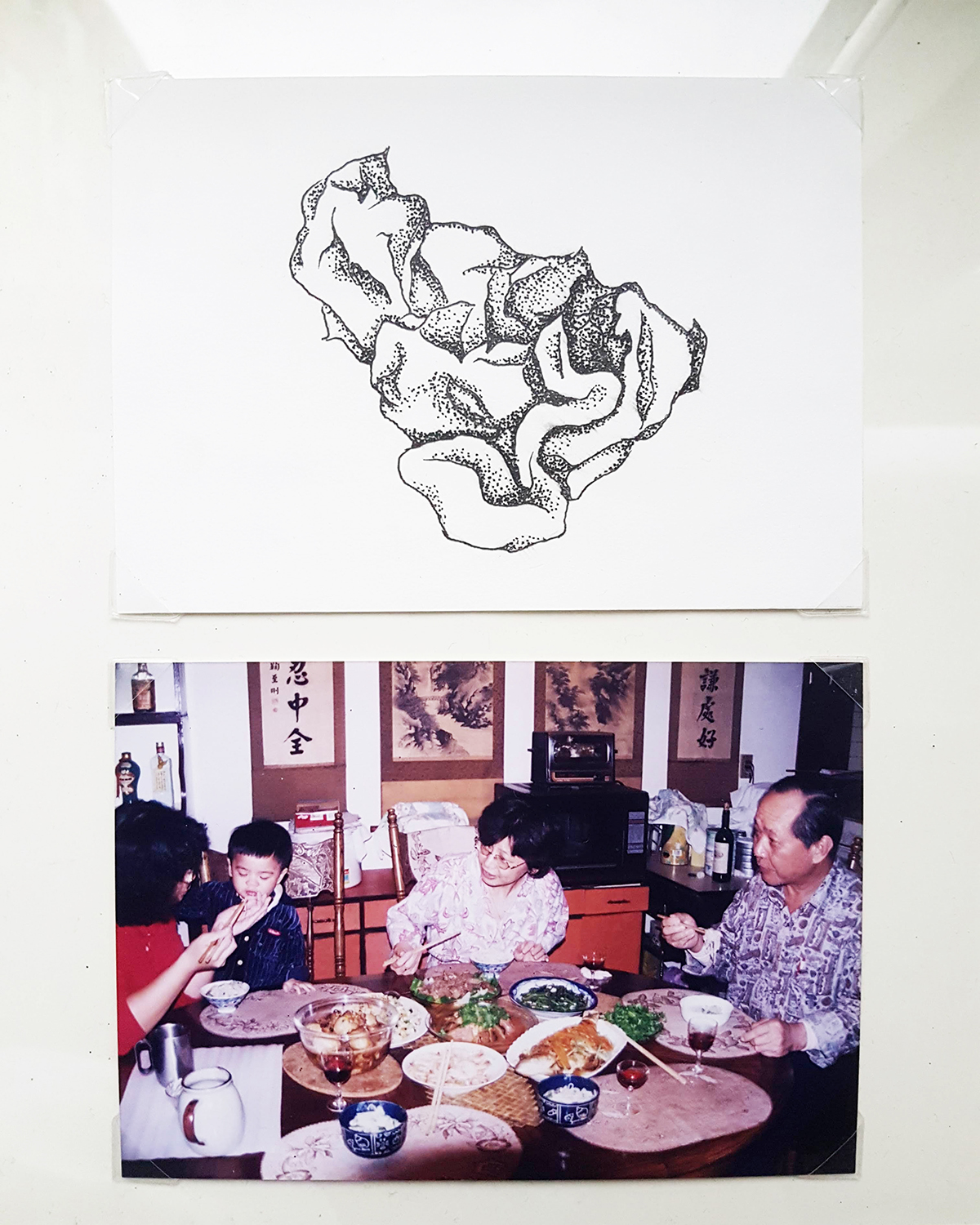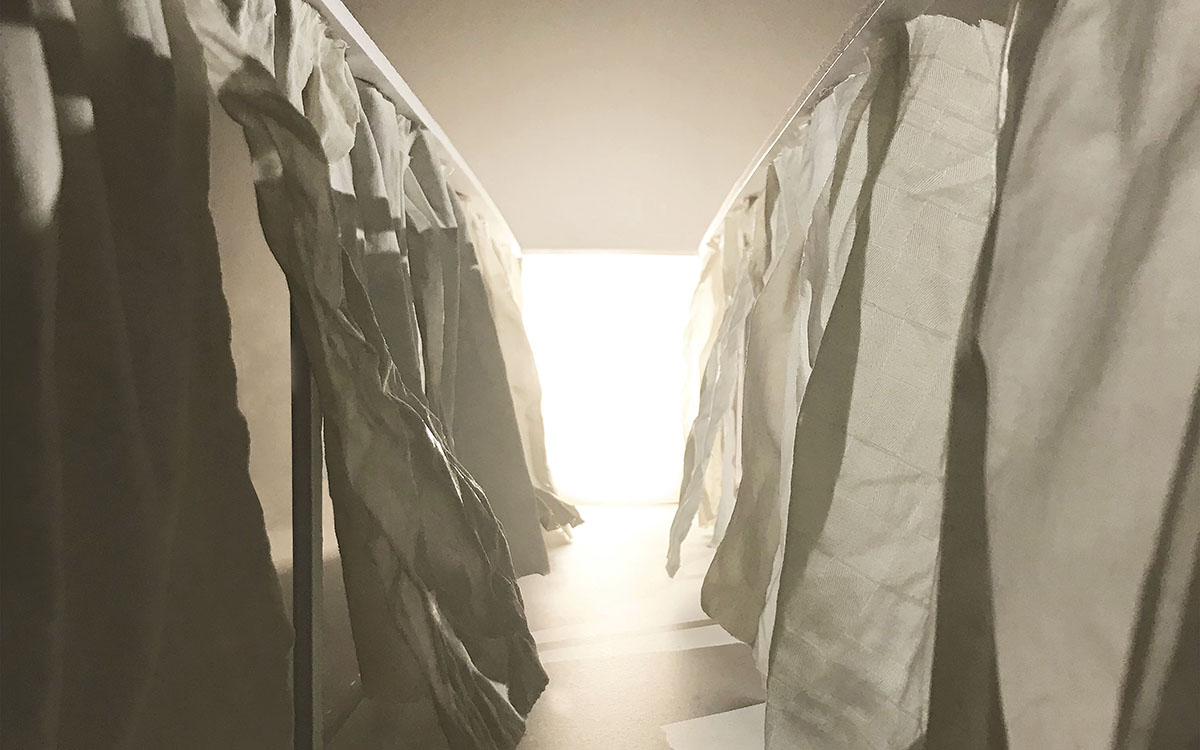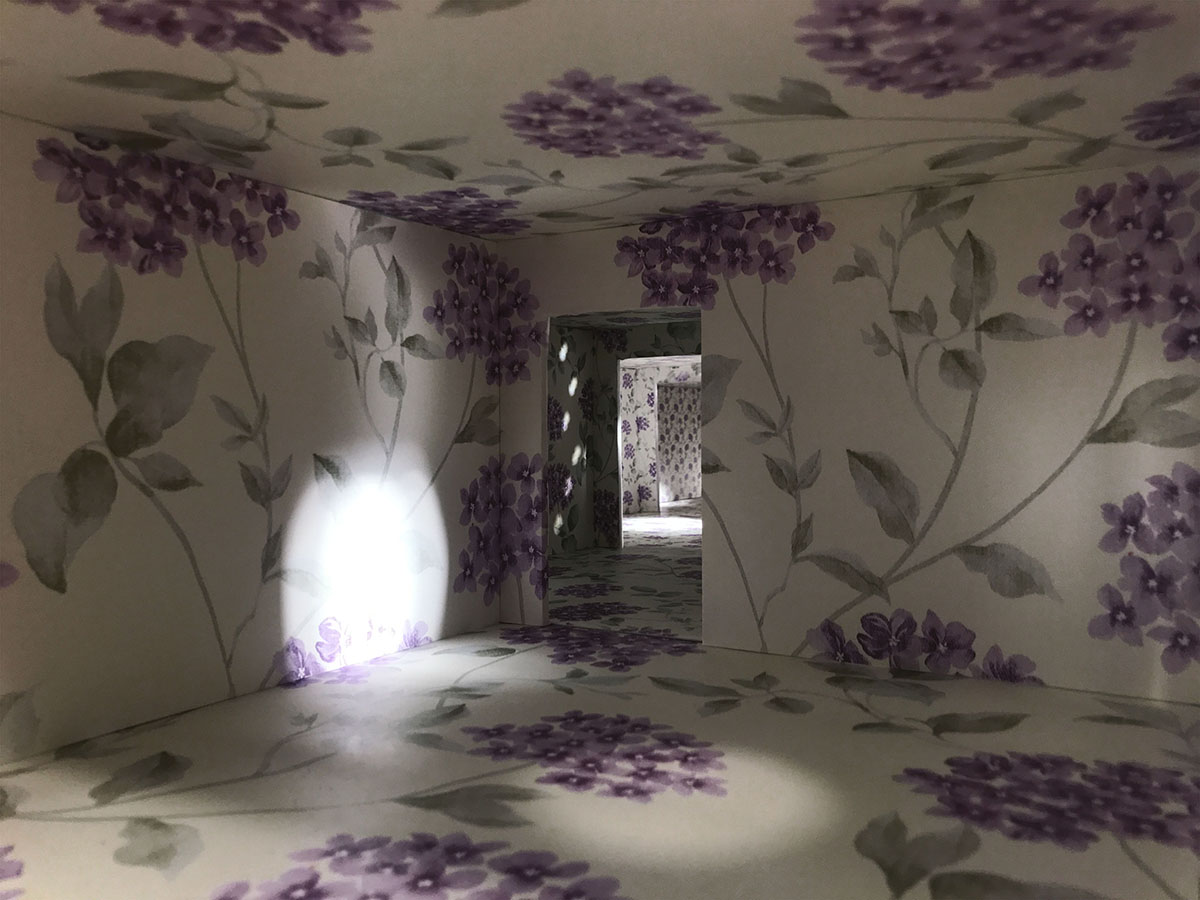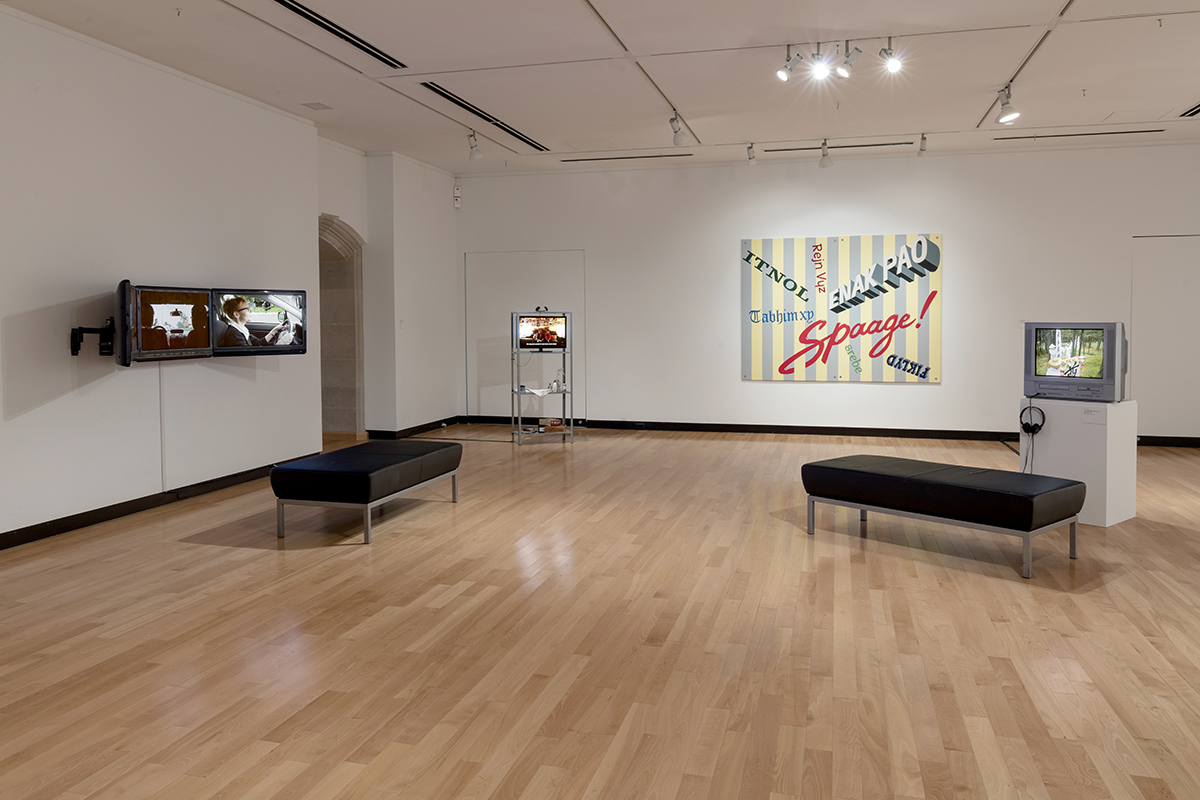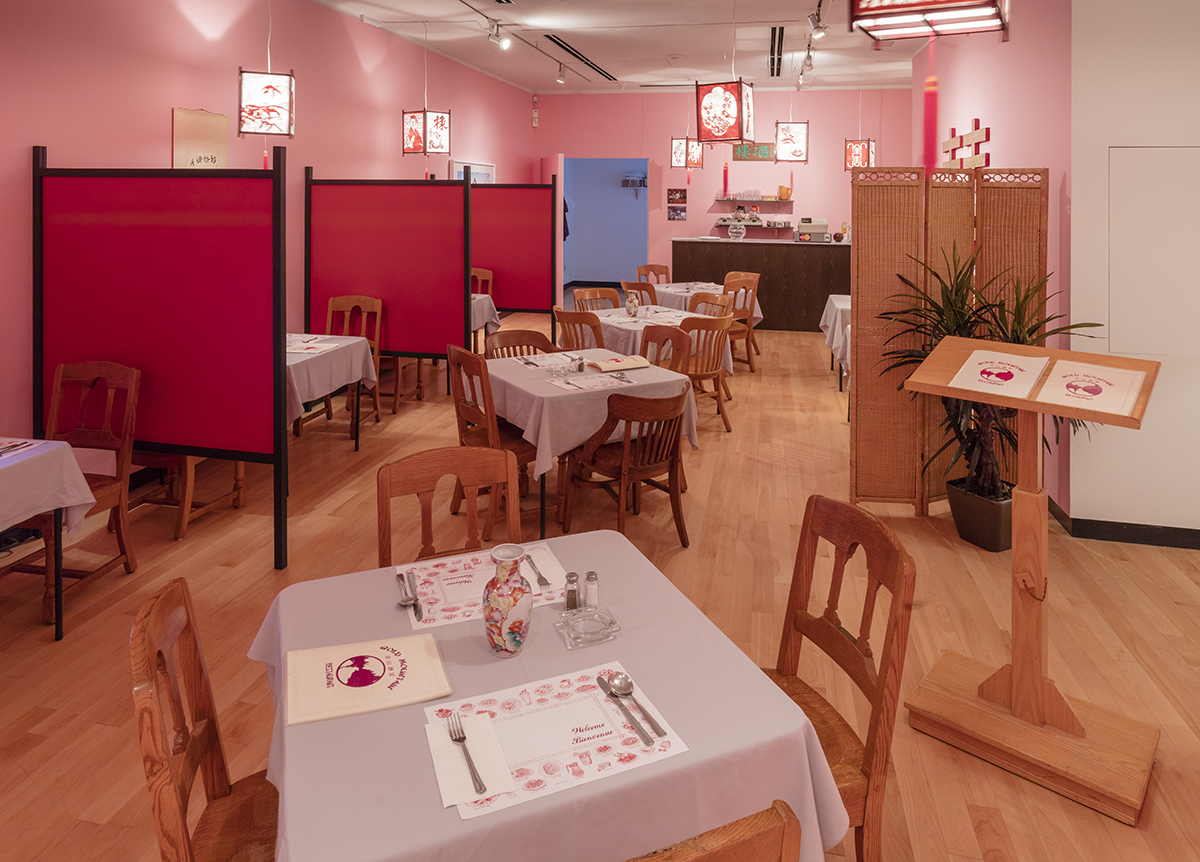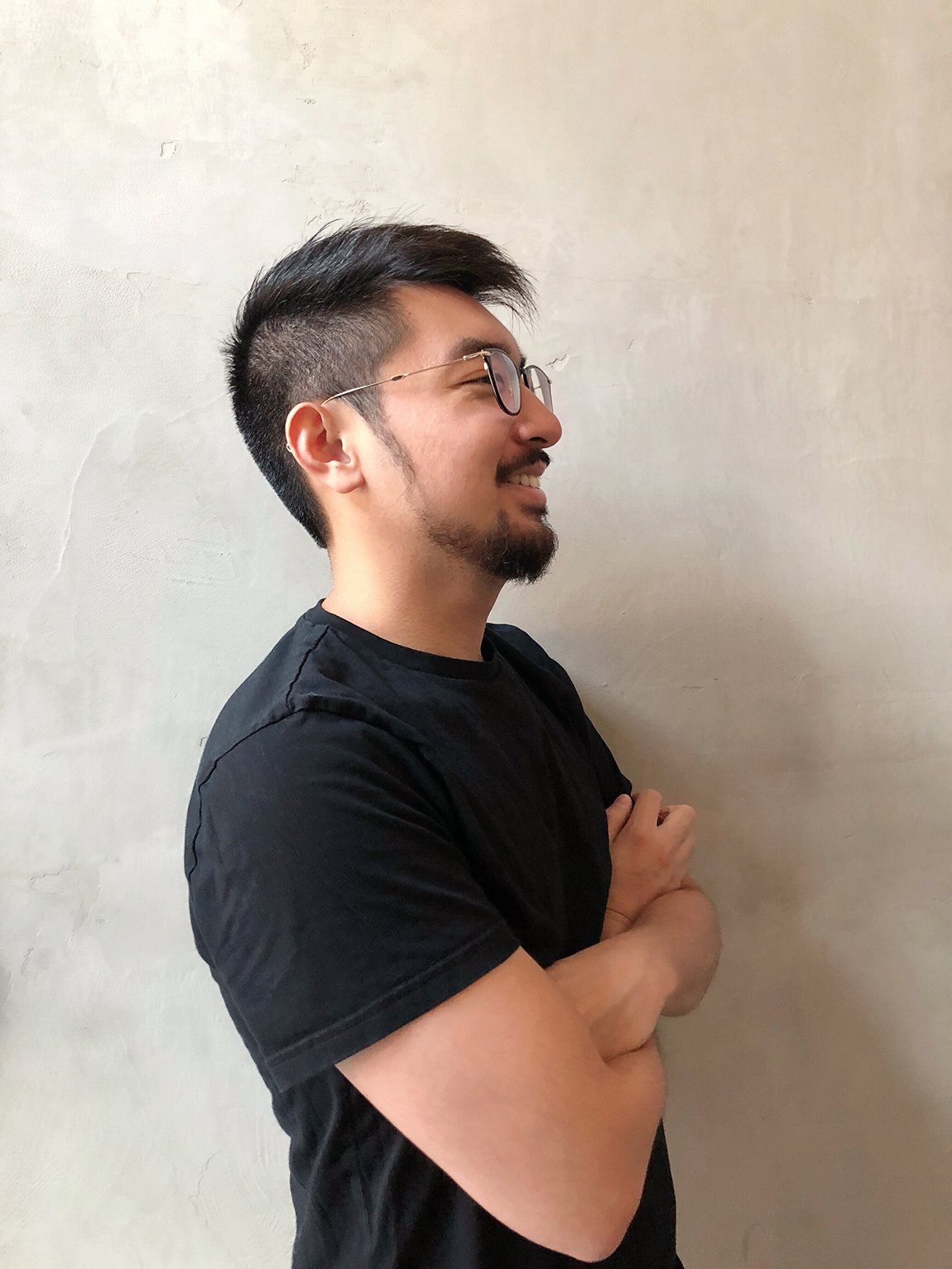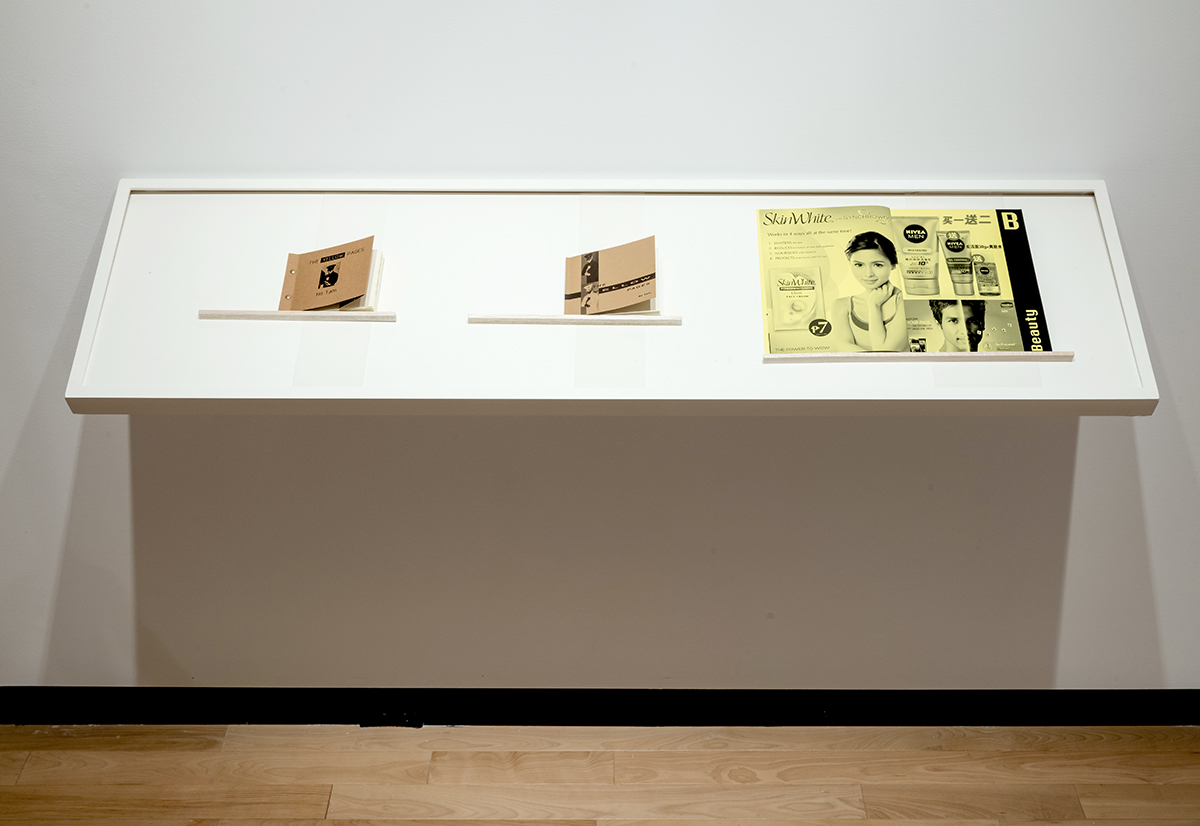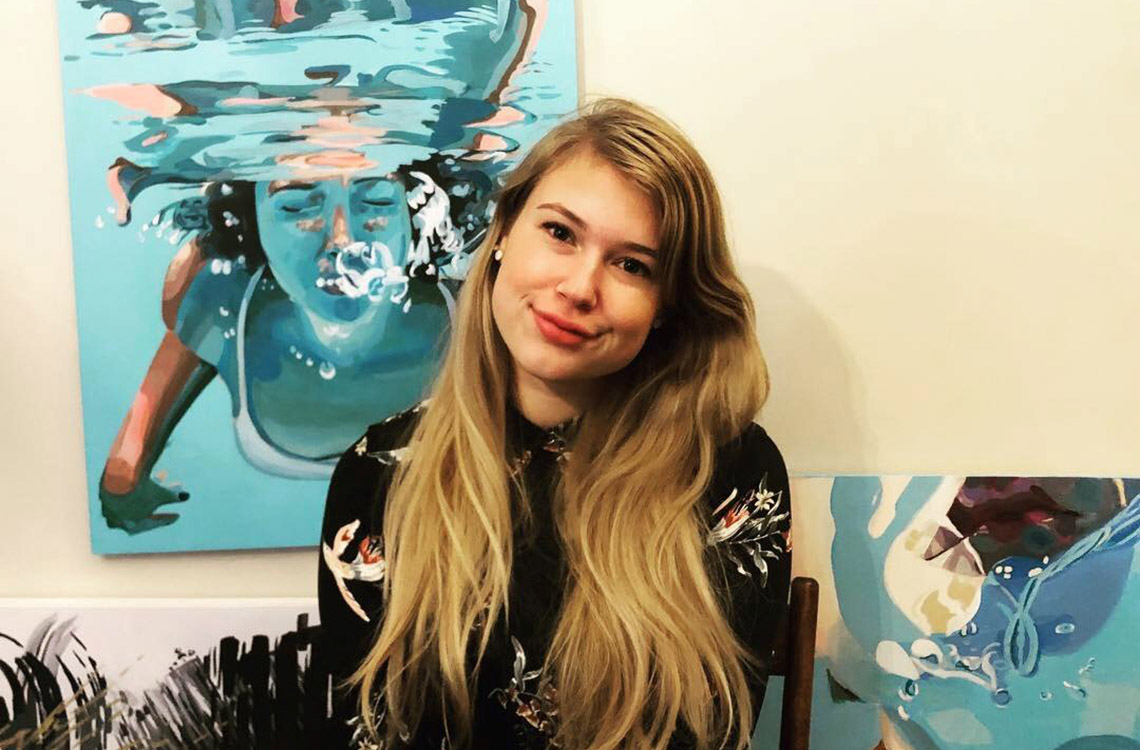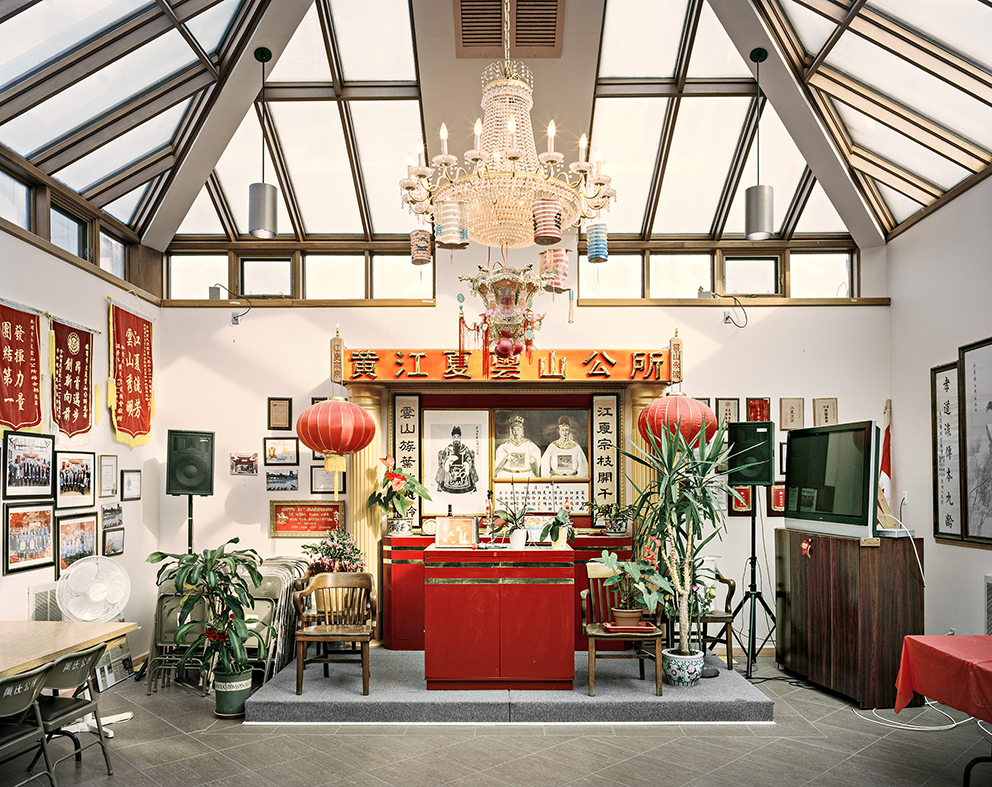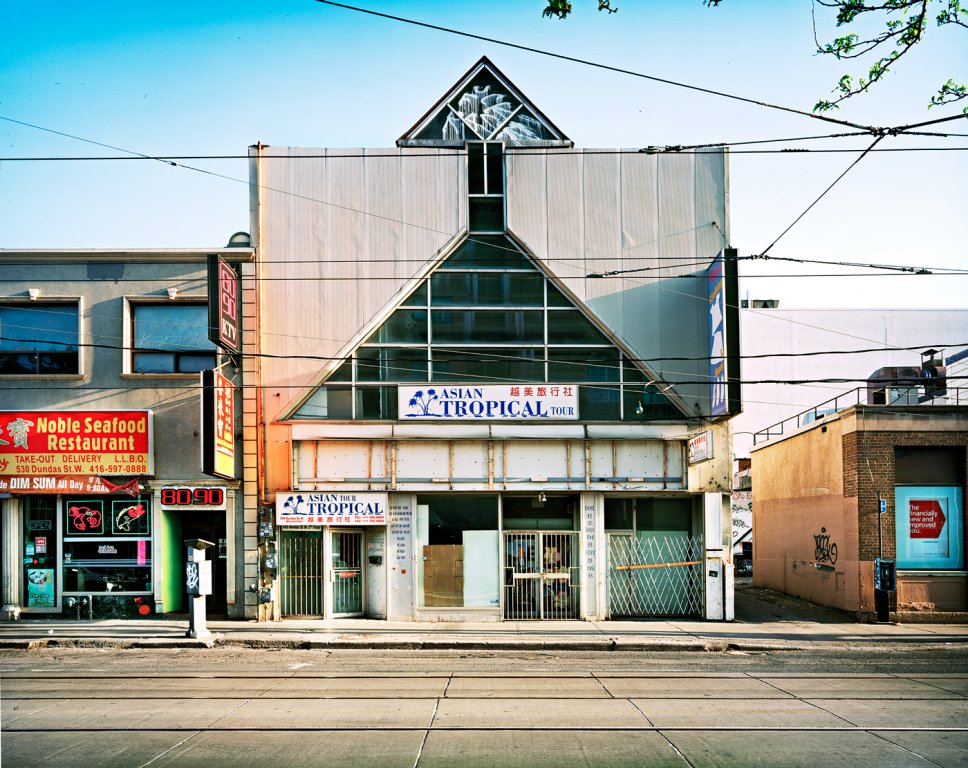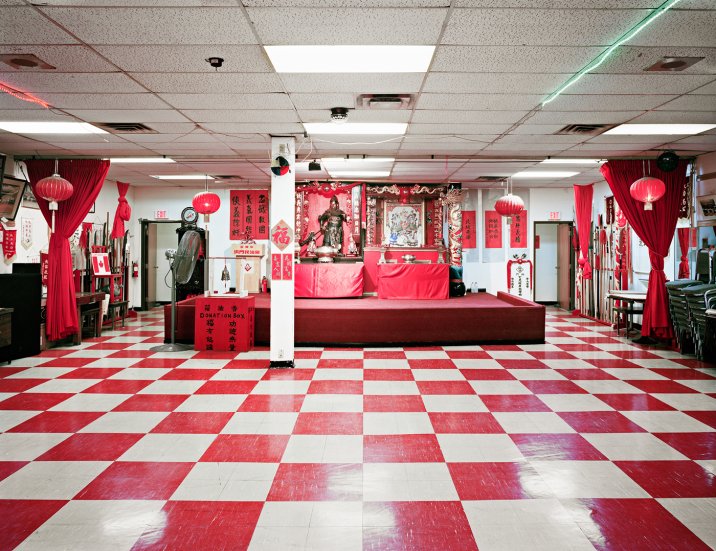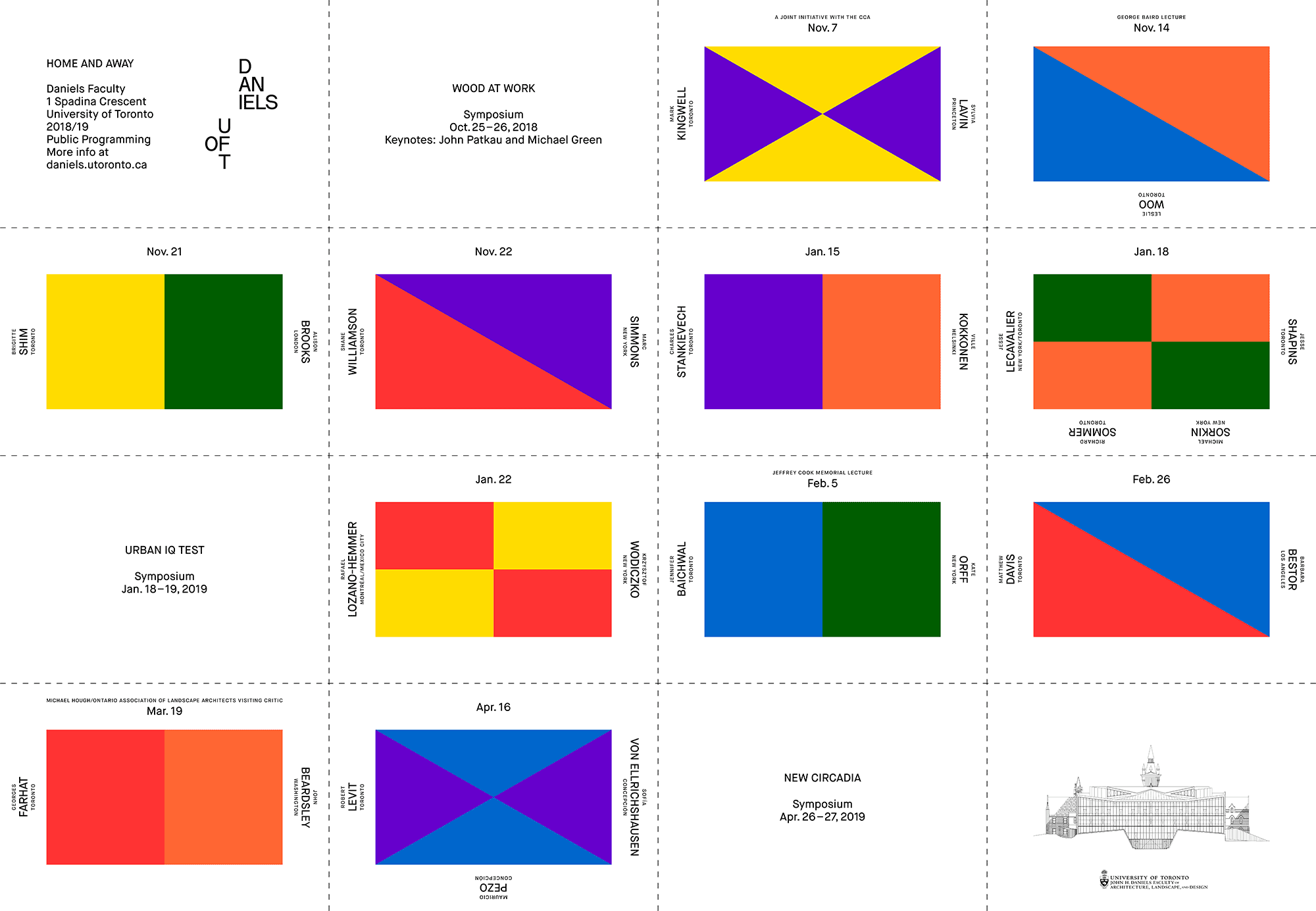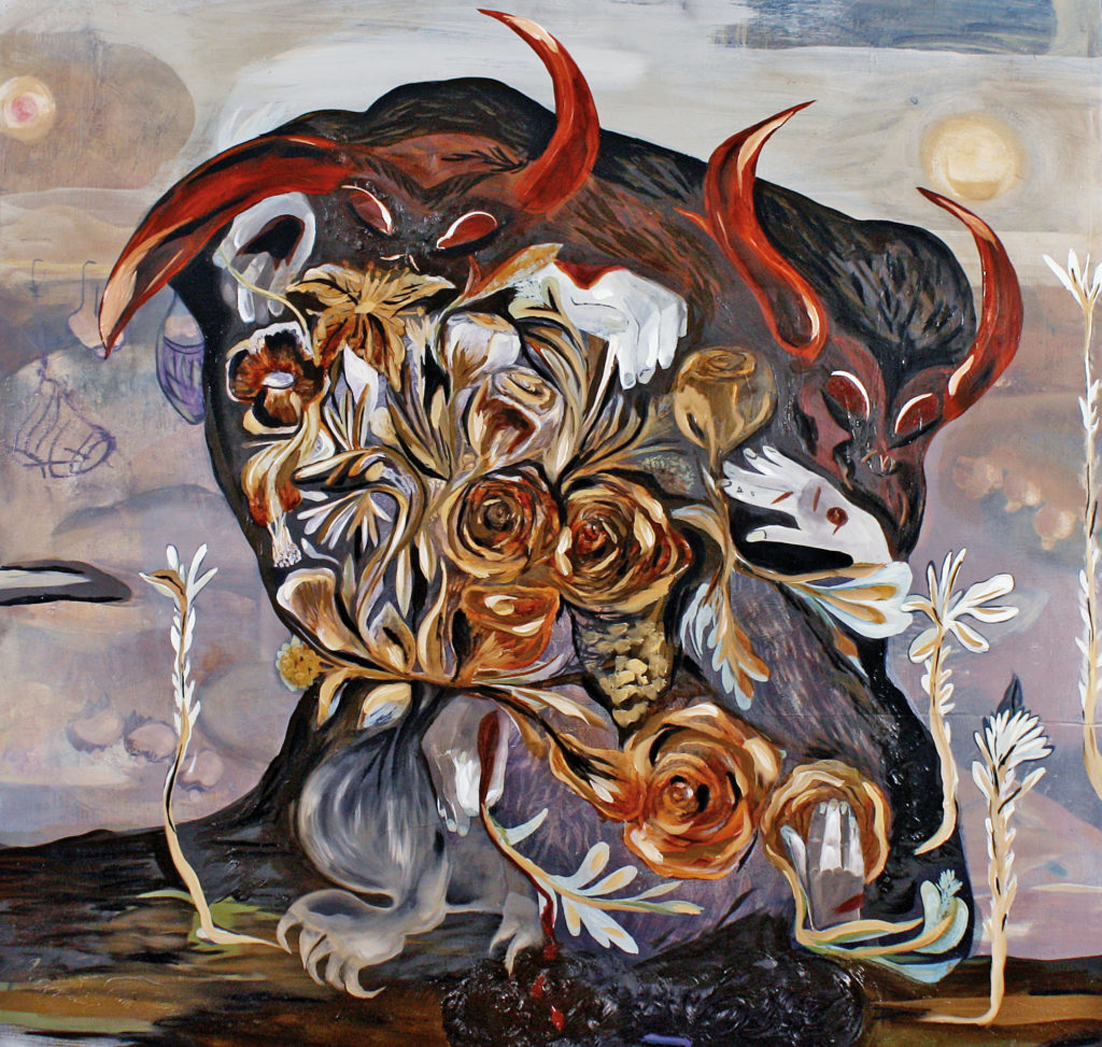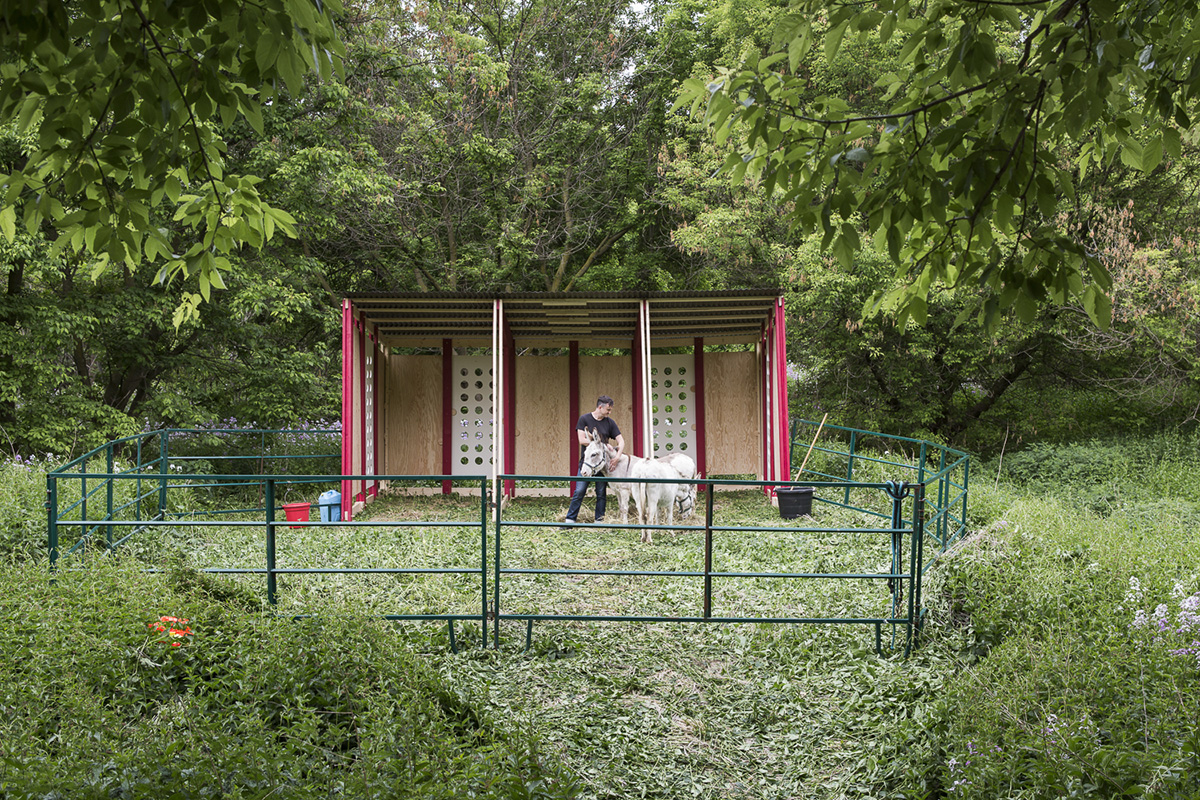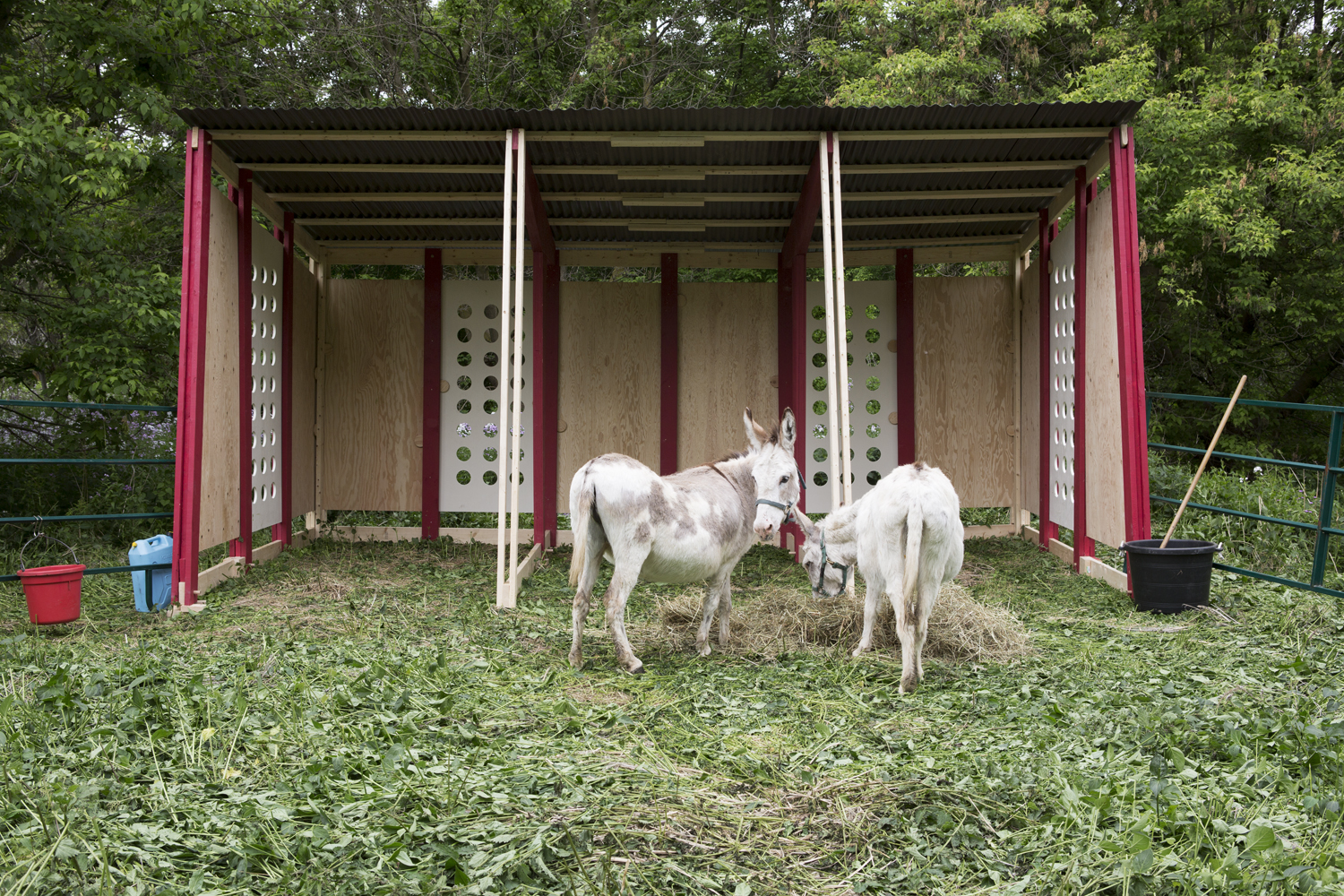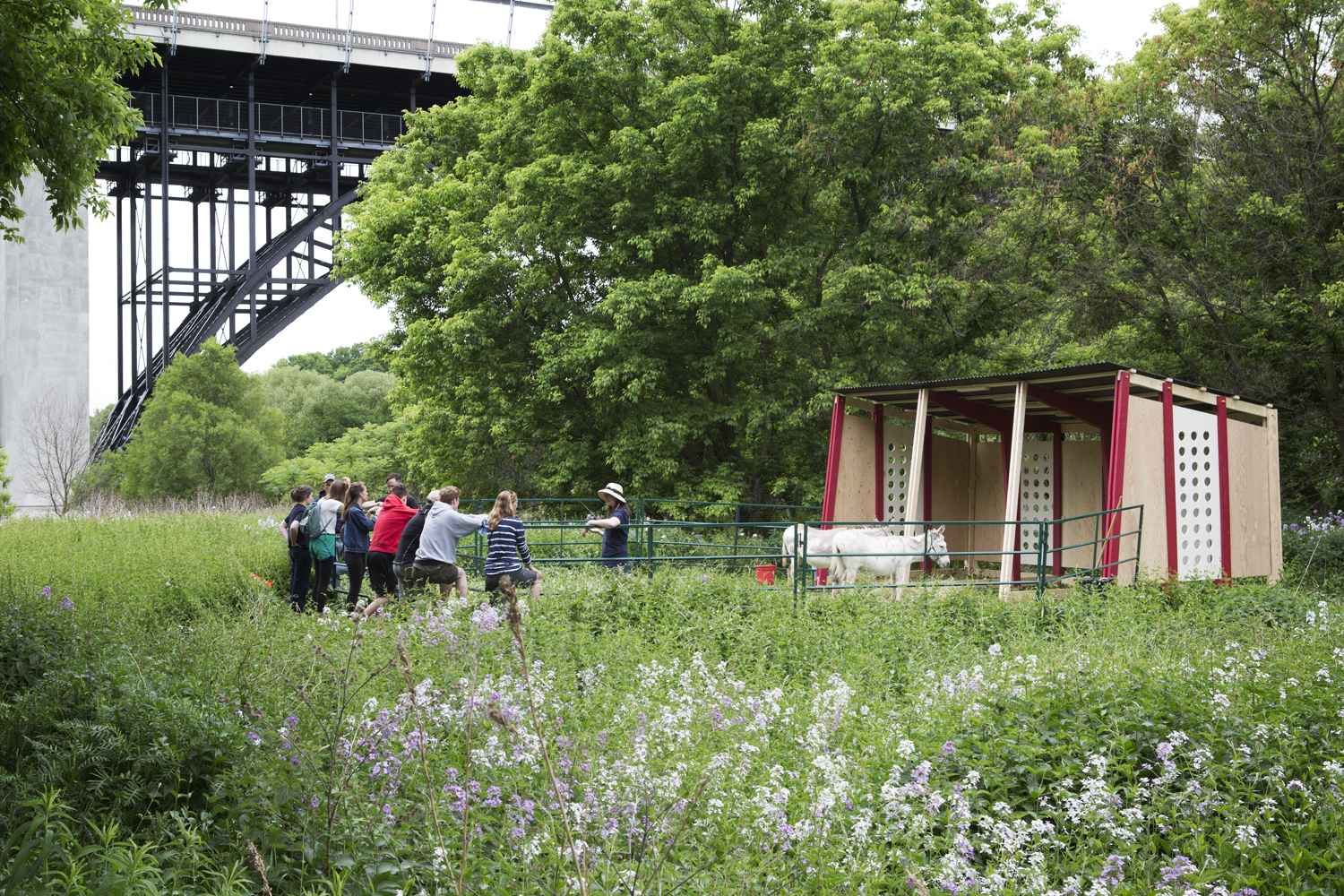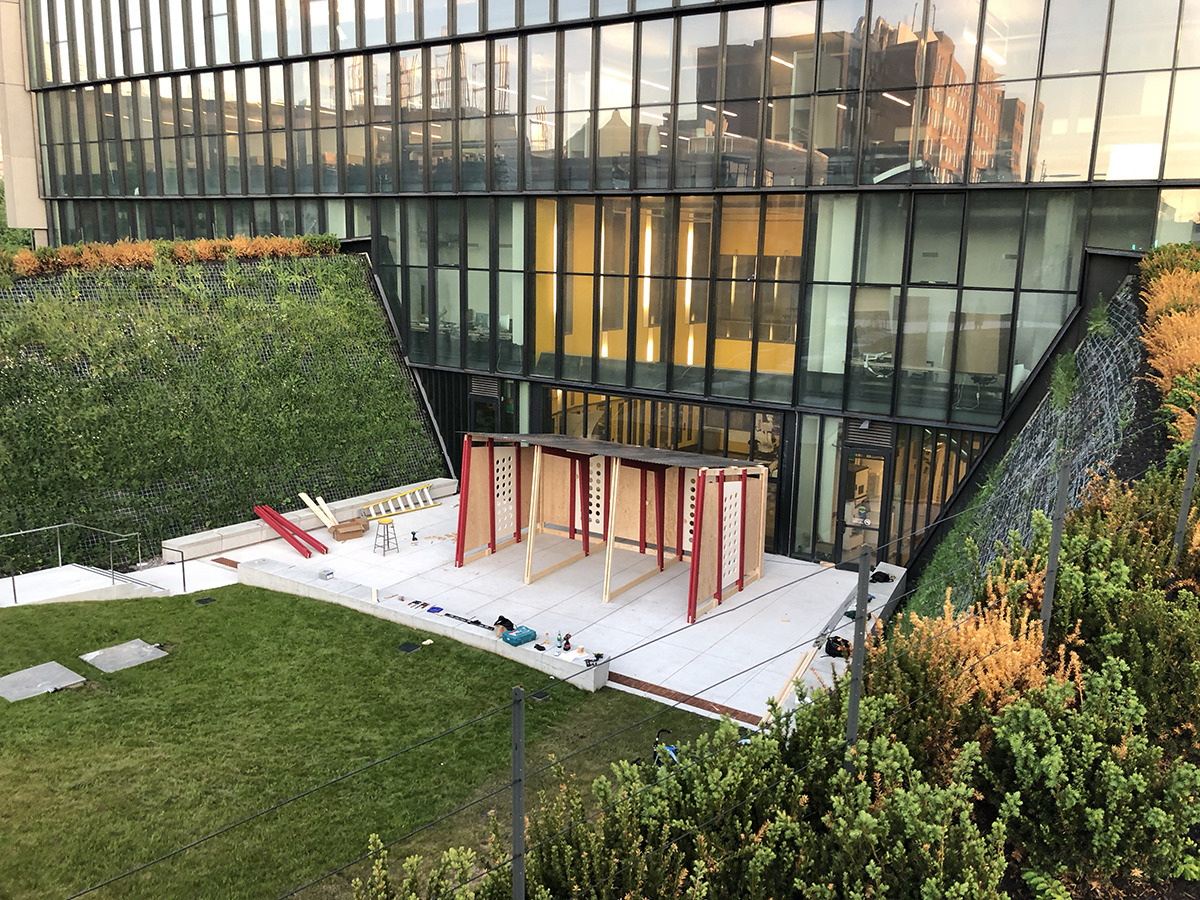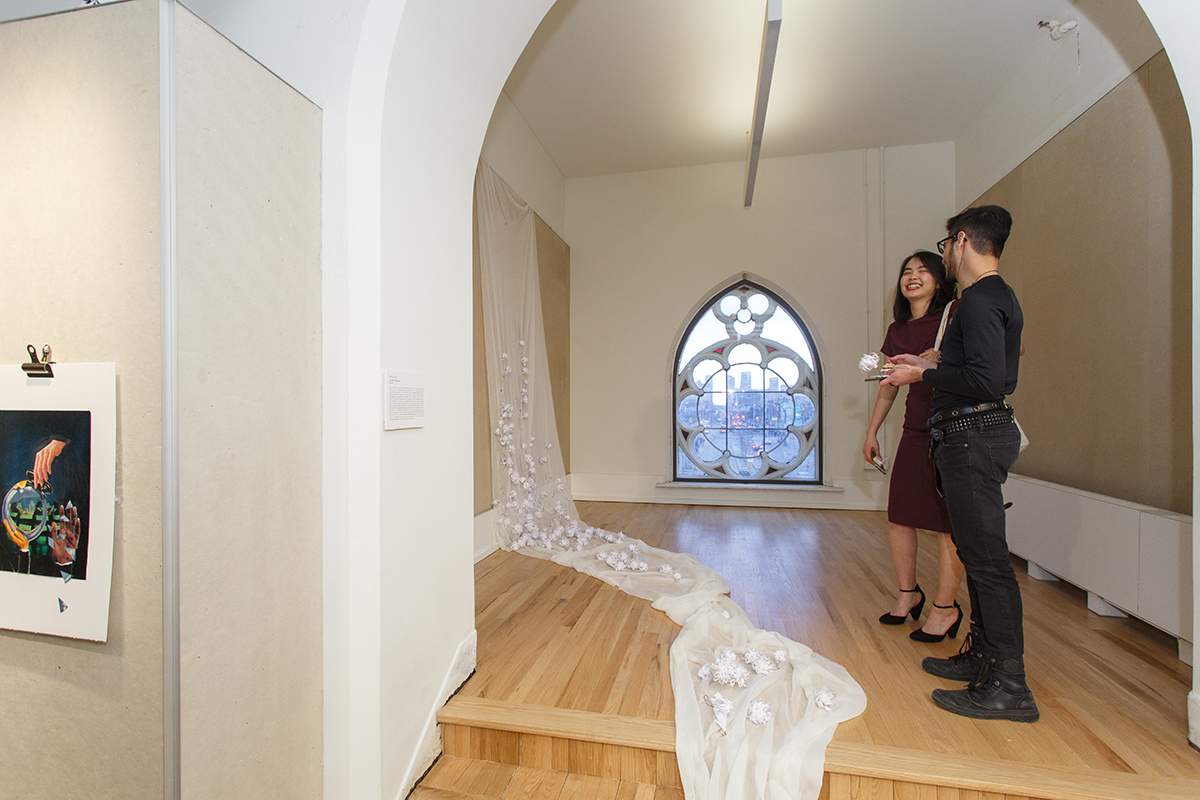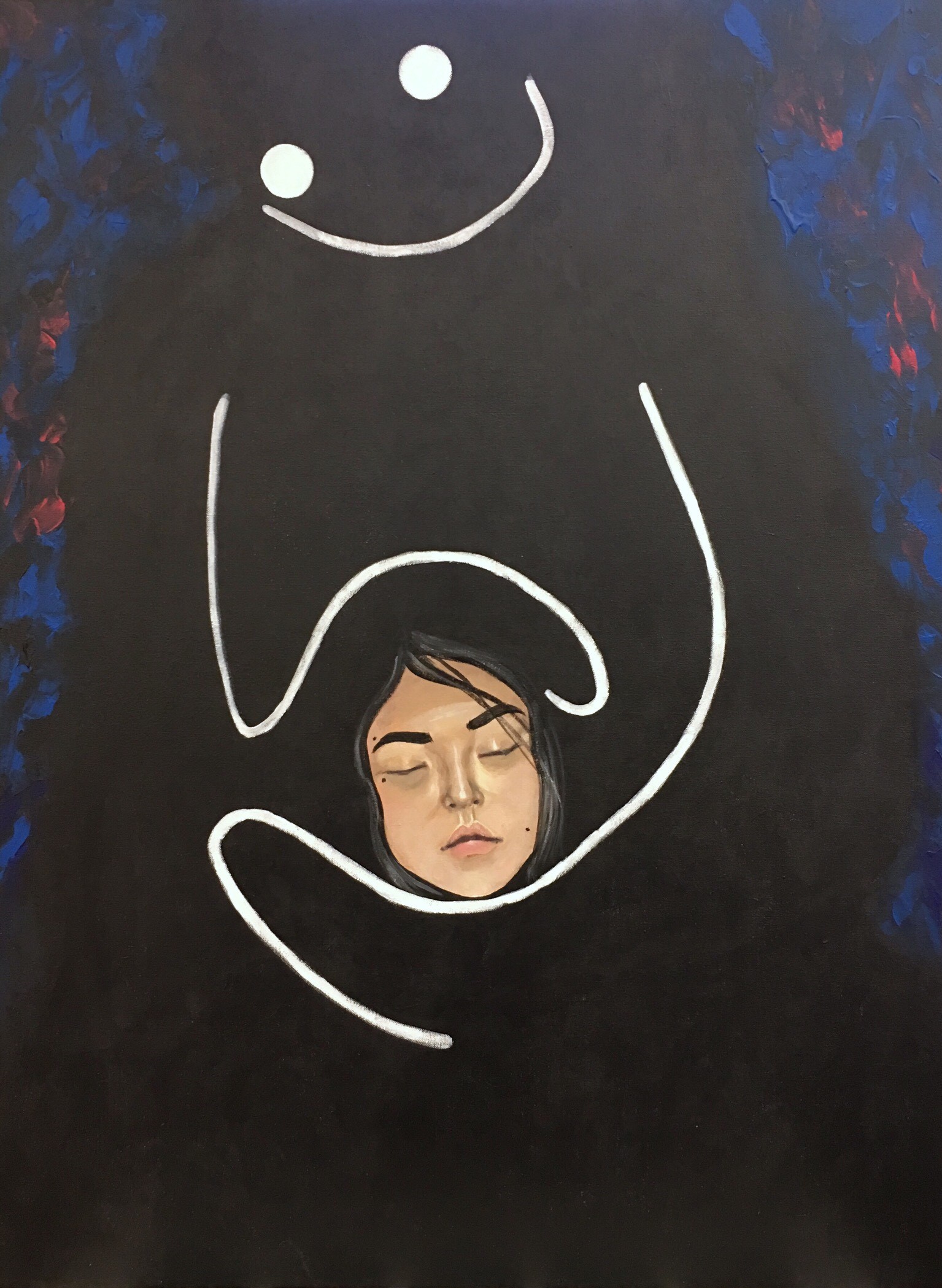02.04.19 - Once Removed, an exhibition of new paintings by Joanne Tod, opens April 4th at the Nicholas Metivier Gallery
On Thursday, April 4, the Nicholas Metivier Gallery will launch the exhibition Once Removed — a series of new paintings by Visual Studies professor Joanne Tod. The gallery will host a talk with Tod and Marc Mayer on Saturday, April 13th at 2:00pm. The exhibition runs until April 27.
Tod has exhibited her work nationally and internationally for the past thirty years. Evolving from an early interest in Pop Art and documentary photography, she is widely known for her subject of social critique in the guise of high realism paintings.
Writes Catherine Osborne in an essay on Once Removed:
Her latest exhibition involves a lot of shimmering metallic surfaces. There are close-ups of pressed tin — the kind used on ceilings in the Victorian era — as well as smaller paintings that depict, variously, a disco ball, a pair of copper fermenting tanks used in micro-breweries, and a burnished vessel of unknown lineage. Reflective surfaces have been a constant in Tod’s work for decades, and the effect never fails to draw the eye, which oscillates between taking in the overall image and studying the artist’s energetic brushstrokes up close.
Paintings, above: 1) Danny Green, 2) Jodie Meeks, 3) Pascal Siakam
Once Removed also includes portraits of the Toronto Raptors. "Tod has always been interested in portraiture as a way to capture moments that define our collective consciousness," writes Osborne. "Here, each NBA all-star is rendered from the neck up on a white background, then grouped on the wall to represent the entire team for the 2018–19 season. The format unites the 15 players, who in the real world are traded so quickly that two had already become free agents before Tod could finish the work."
Her series Vanity Fair (2002), featured portraits of individuals from the Toronto art community posing as contemporary representatives of characters from William Thackeray’s 19th century satire. The exhibition Kingdom Come (2009) at Nicholas Metivier Gallery, examined notions of proprietary and moral rights, in relation to antiquities and museum holdings.
Between 2007 - 2011, Tod painted every Canadian soldier that fell in Afghanistan. The project, entitled Oh, Canada – A Lament, consisted of 6" x 5" portraits that were interspersed with other painted panels arranged to resemble a fragmented Canadian flag. The installation travelled to prominent galleries and museums across Canada including the Canadian Warplane Heritage Museum and Toronto's Harbourfront Centre.
Tod's series Vanity Fair (2002), featured portraits of individuals from the Toronto art community posing as contemporary representatives of characters from William Thackeray’s 19th century satire. The exhibition Kingdom Come (2009) at Nicholas Metivier Gallery, examined notions of proprietary and moral rights, in relation to antiquities and museum holdings.
Between 2007 and 2011, Tod painted every Canadian soldier that fell in Afghanistan. The project, entitled Oh, Canada – A Lament, consisted of 6" x 5" portraits that were interspersed with other painted panels arranged to resemble a fragmented Canadian flag. The installation travelled to prominent galleries and museums across Canada including the Canadian Warplane Heritage Museum and Toronto's Harbourfront Centre.
For more information on the exhibition, visit the Nicholas Metivier Gallery's website.
Paintings, top: 1) Hoop and Daisy, 2) Lavender Lux, 3) Malcolm Gladwell


